
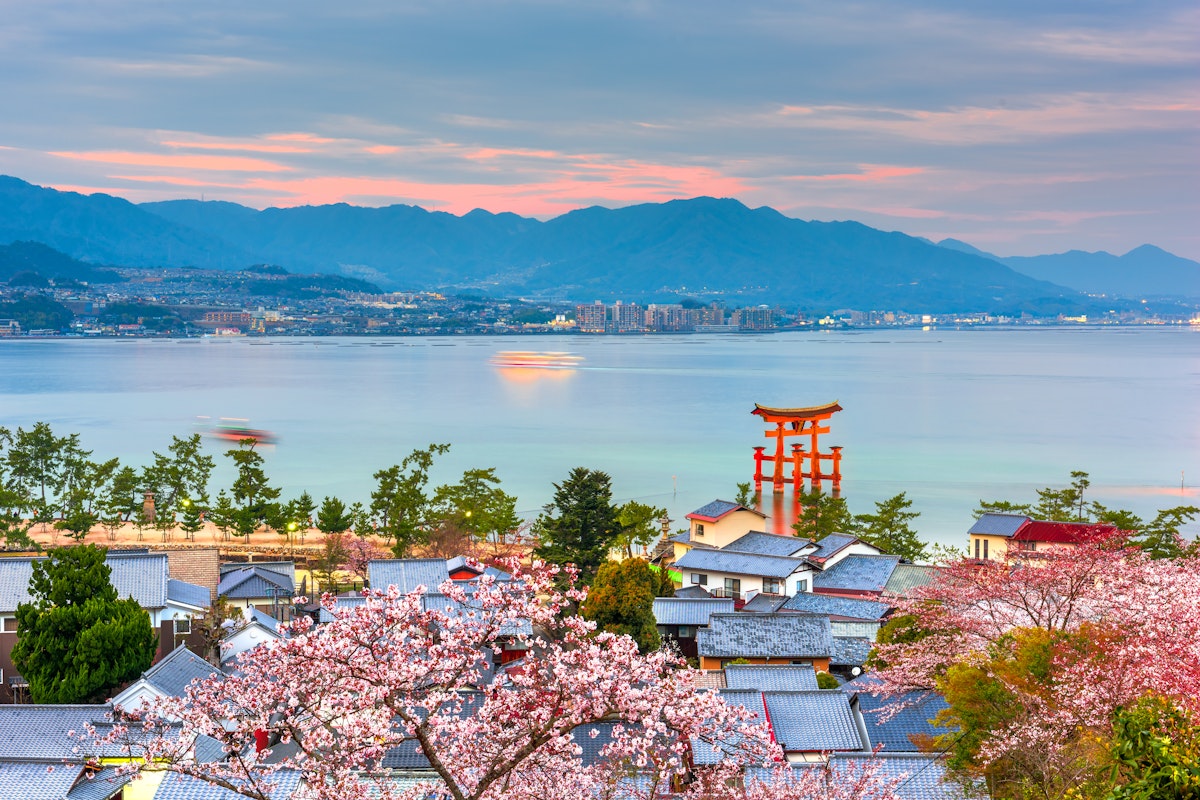
히로시마, 풍부한 역사와 심오한 회복력이 공존하는 도시로, 종종 제2차 세계 대전의 참혹한 원자폭탄 투하와 동의어로 여겨진다. 히로시마 평화 기념공원과 원폭 돔이 의심할 여지 없이 중요하지만, 이 놀라운 도시의 다양한 문화와 자연의 아름다움을 보여주는 많은 덜 알려진 명소들도 있다.
울창한 숲 속에 숨겨진 고요한 사원부터 친절한 야생동물이 서식하는 매력적인 섬에 이르기까지, 히로시마는 탐험할 숨겨진 보물들이 가득하다. 이 가이드는 히로시마의 숨겨진 보석에 대해 파고들어 일반적인 관광 루트를 넘어 독특하고 풍요로운 경험을 제공하며, 방문자들이 이 도시의 다면적인 매력과 지속적인 정신을 발견할 수 있도록 한다.

미타키데라 절, 809년에 세워진 이 고요한 불교 사원은 히로시마 시 바로 북쪽의 미타키산 경사면의 울창한 숲 속에 위치해 있다. 이 절은 세 개의 폭포가 유명하여 "미타키"라는 이름이 붙여졌으며, 글자 그대로 "세 개의 폭포"를 의미한다.
절의 경내는 아름다운 탑, 수많은 석상, 그리고 흐르는 물의 편안한 소리로 장식되어 있으며, 고요한 분위기를 만들어낸다. 하이라이트 중 하나는 1951년 와카야마에서 이전되어 원자폭탄 희생자들의 추모 기념물 역할을 하는 주홍색 2층 탑이다.
절은 봄의 벚꽃 시즌과 생생한 가을 단풍철에 특히 아름답다.
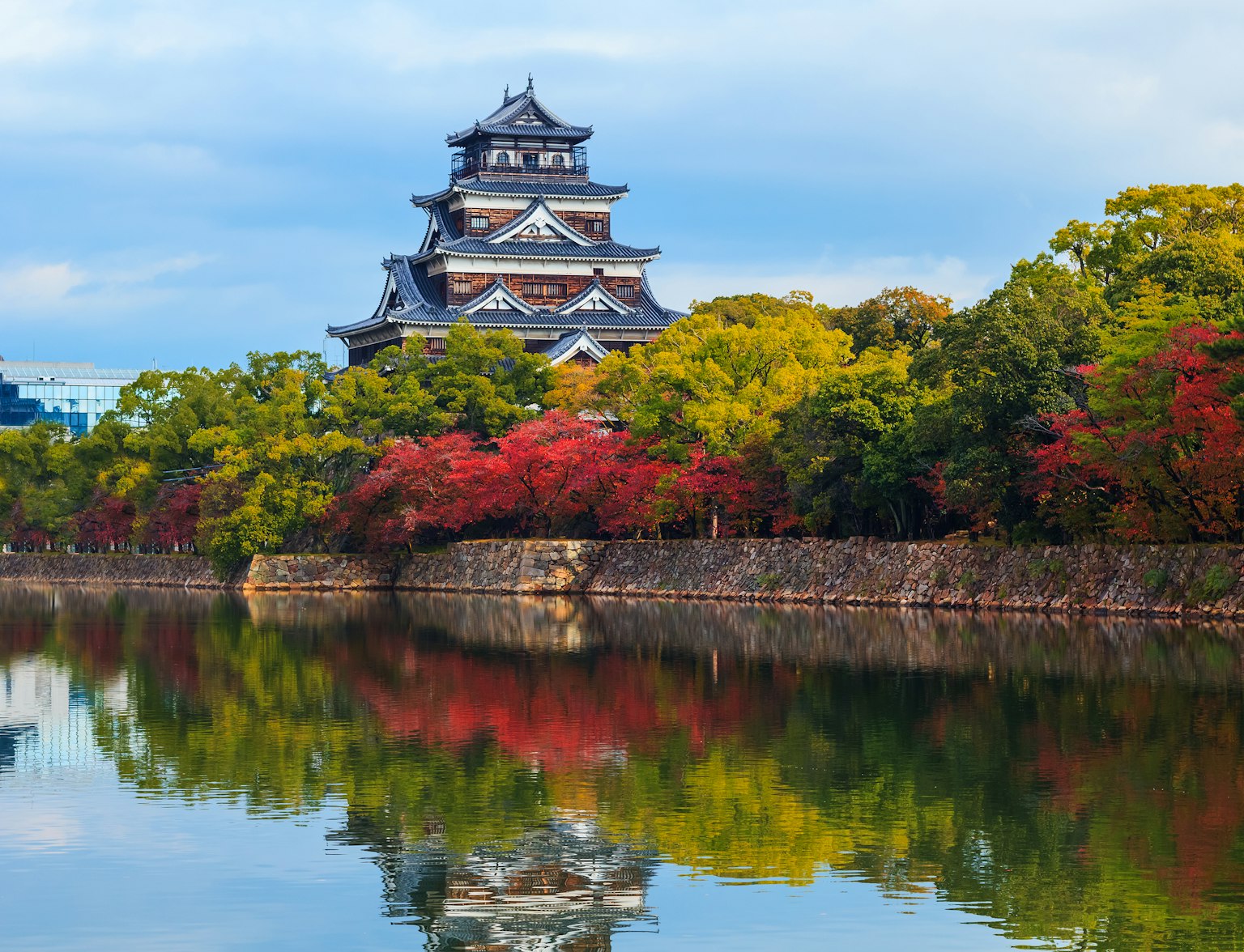
미타키데라에서 영적 휴식을 취하며 하루를 시작하세요.
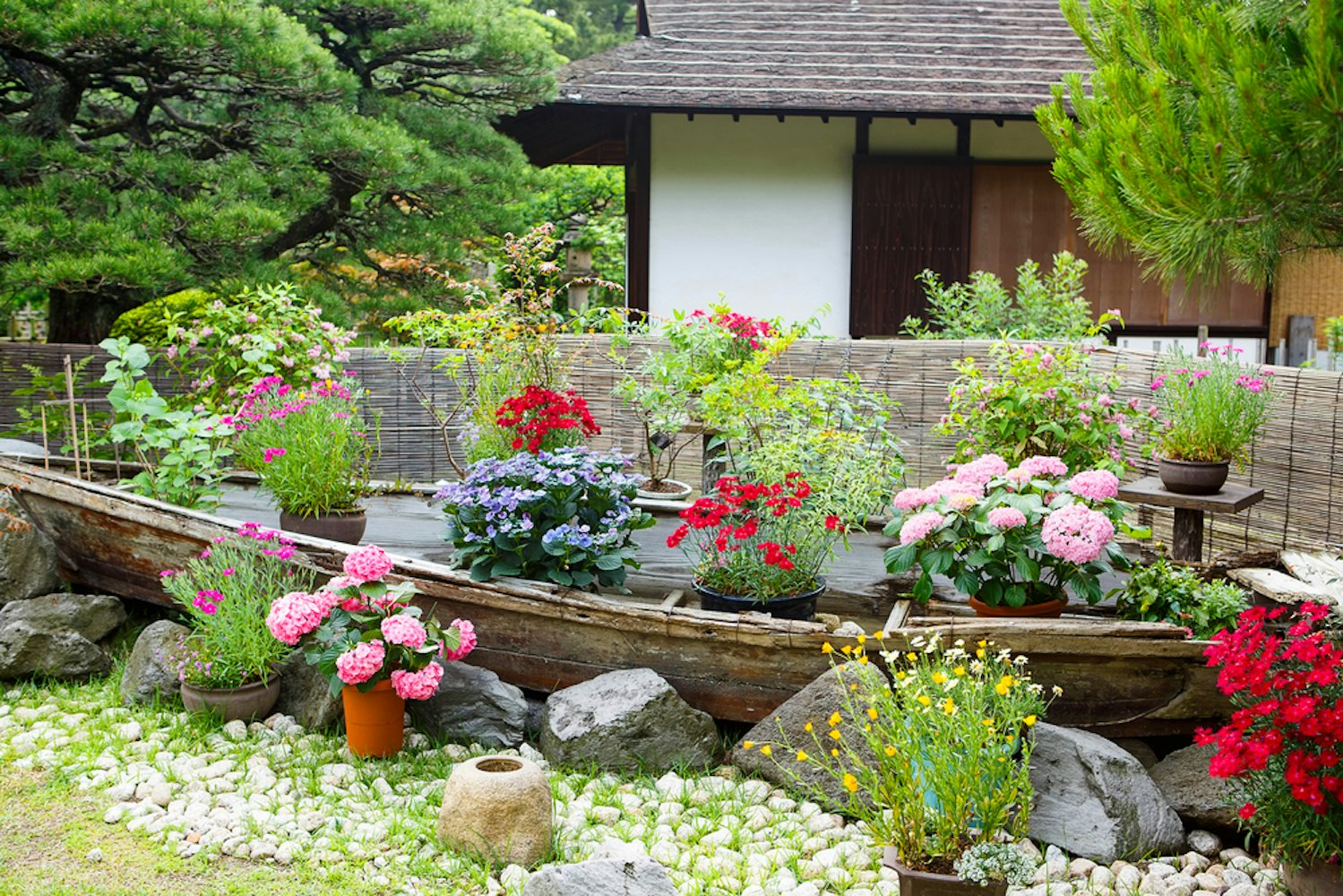
1620년에 봉건 영주 아사노 나가아키라에 의해 설립된 슝케이엔 정원은 "축소된 풍경 정원"으로 번역되며, 미소로 다양한 자연 경관을 아름답게 재현한다. 정원의 중앙 연못은 정교하게 만들어진 산책로, 다리, 그리고 찻집에 의해 둘러싸여 있으며, 도시 생활에서 벗어나 고요한 피난처를 제공한다.
방문객들은 울창한 녹음과 정교하게 다듬어진 나무들, 그리고 봄의 생생한 벚꽃을 즐길 수 있어 휴식과 성찰을 위한 이상적인 장소가 된다. 제2차 세계 대전 중 피해를 입었으나, 슝케이엔은 본래의 영광을 되찾고 현재는 히로시마의 지속적인 아름다움과 회복력을 상징하는 장소로 남아 있다.

혼잡한 곳에서 벗어나 평화로운 휴식을 제공하는 슈케이엔 정원에서 고요한 산책을 즐겨보세요.
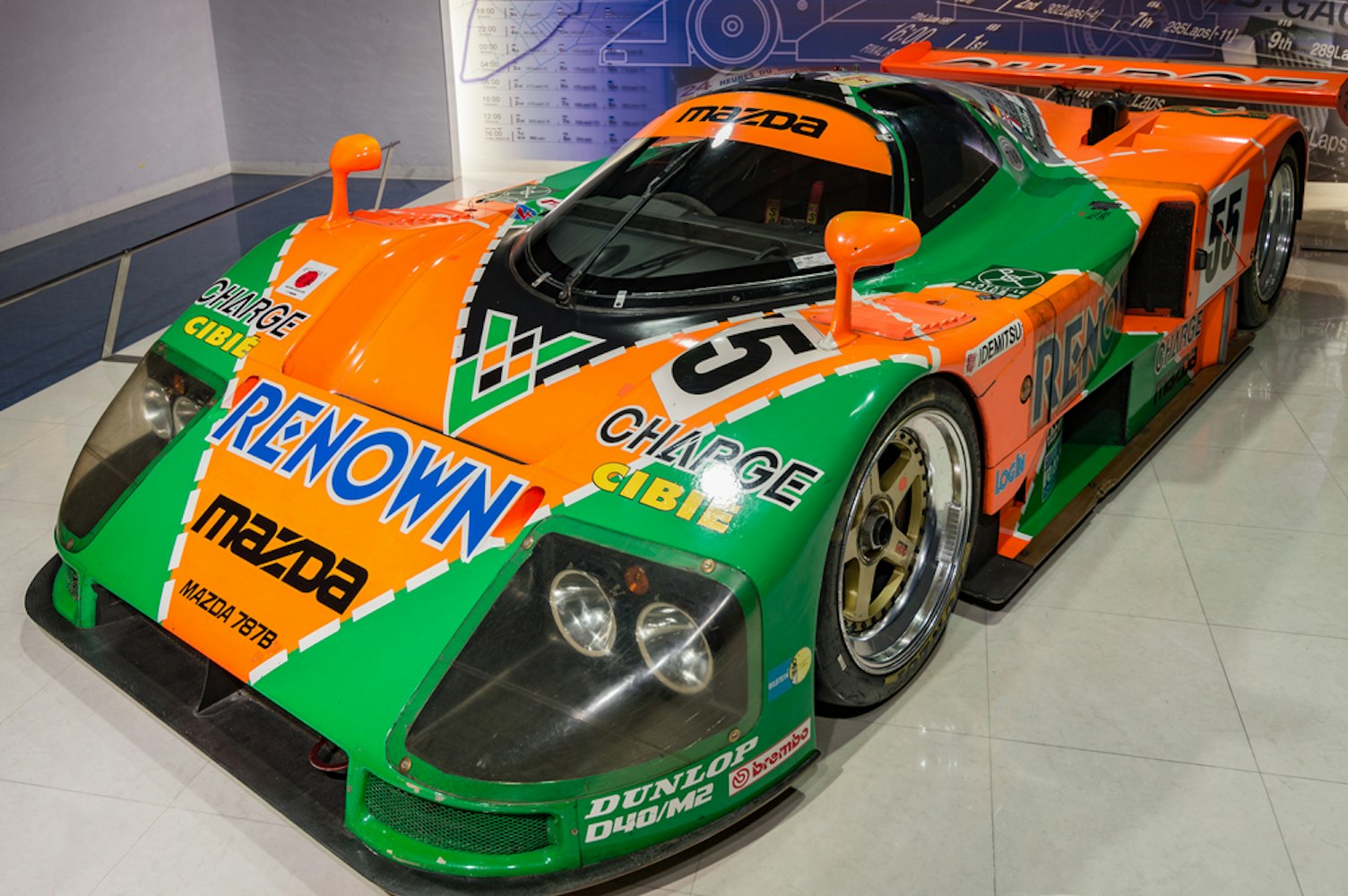
히로시마현의 마쯔다 뮤지엄은 일본의 가장 유명한 자동차 제조사 중 하나의 과거, 현재 및 미래에 대한 흥미로운 여정을 제공한다. 방문객들은 1920년대의 시작부터 오늘날의 혁신적인 발전에 이르기까지 마쯔다의 역사를 살펴볼 수 있다.
투어에는 초기 삼륜 오토 리키샤와 1991년 르망 24시간 레이스에서 우승한 마쯔다 경주차를 포함하여 회사의 상징적인 차량에 대한 상세한 정보가 포함된다. 방문의 하이라이트는 활성 차량 조립 라인의 독점적인 관람으로, 손님들은 자동차 제조의 복잡한 과정을 직접 목격할 수 있다.
박물관은 자동차 애호가에게 필수 방문지이며, 히로시마의 산업적 우수성을 독특하게 엿볼 수 있는 기회를 제공한다.
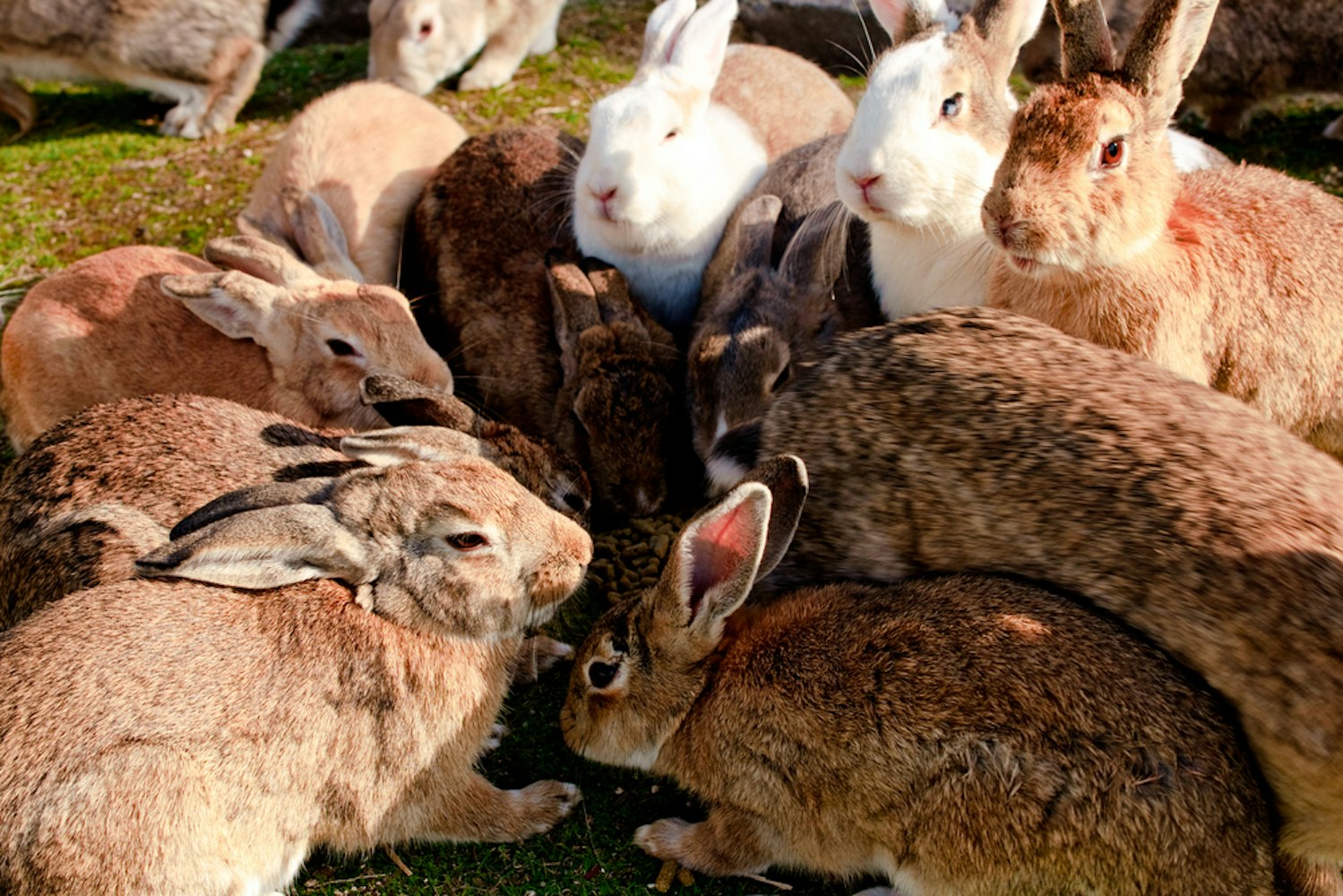
히로시마 시에서 짧은 기차 여행을 하다 보면 오쿠노시마라는 작은 섬이 있다. 세토 내해에서 친근하게 돌아다니는 토끼들의 개체수로 유명하다. 다다누미 항에서 15분의 페리로 접근할 수 있는 이 섬은 역사적 흥미와 자연의 아름다움이 풍부한 독특한 당일 여행지이다.
방문객들은 섬의 4km 주변을 자전거로 순환하거나 하이킹하며, 제2차 세계 대전 시대의 독가스 공장의 잔재를 탐험할 수 있다. 섬에는 독가스 박물관도 있으며, 화학 무기 생산지로서의 어두운 과거를 엿볼 수 있는 기회를 제공한다.
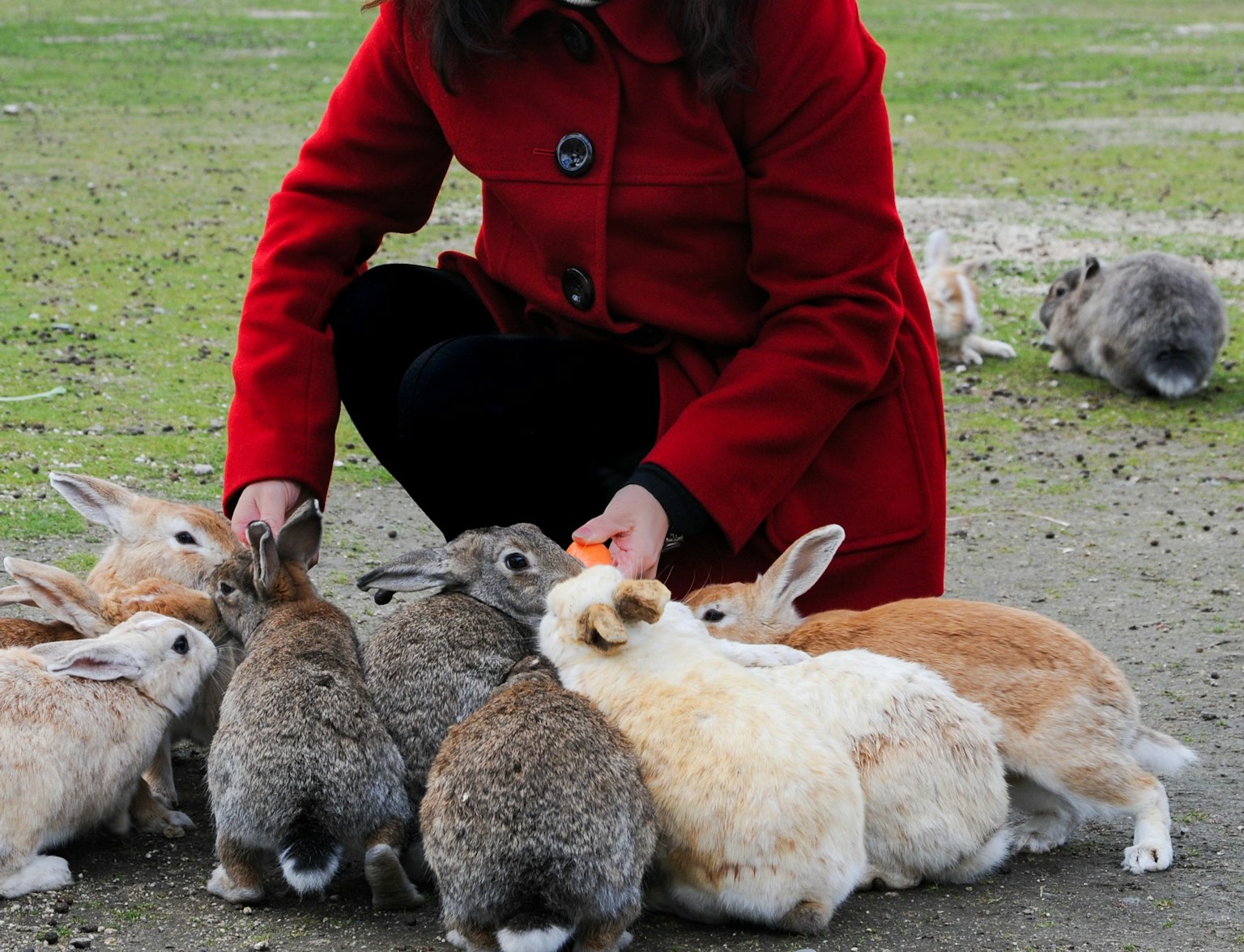
발견과 기쁨의 여행을 시작하여 매혹적인 오쿠노시마 섬으로 가십시오.

오노미치 시의 산위에 자리 잡은 센코지 공원은 세토 내해와 그 주변 풍경의 숨막힐 듯한 파노라마 뷰를 제공한다. 이 공원은 화려한 빨간 본전과 고요한 분위기로 유명한 역사적인 센코지 절의 고향이다.
방문객들은 또한 공원까지의 경치 좋은 로프웨이 탑승을 즐길 수 있어, 경치를 감상하며 멋진 전경을 강조할 수 있다. 게다가 센코지 공원은 벚꽃으로 유명해 일본에서 가장 인기 있는 100대 벚꽃 놀이터 중 하나로 꼽힌다.
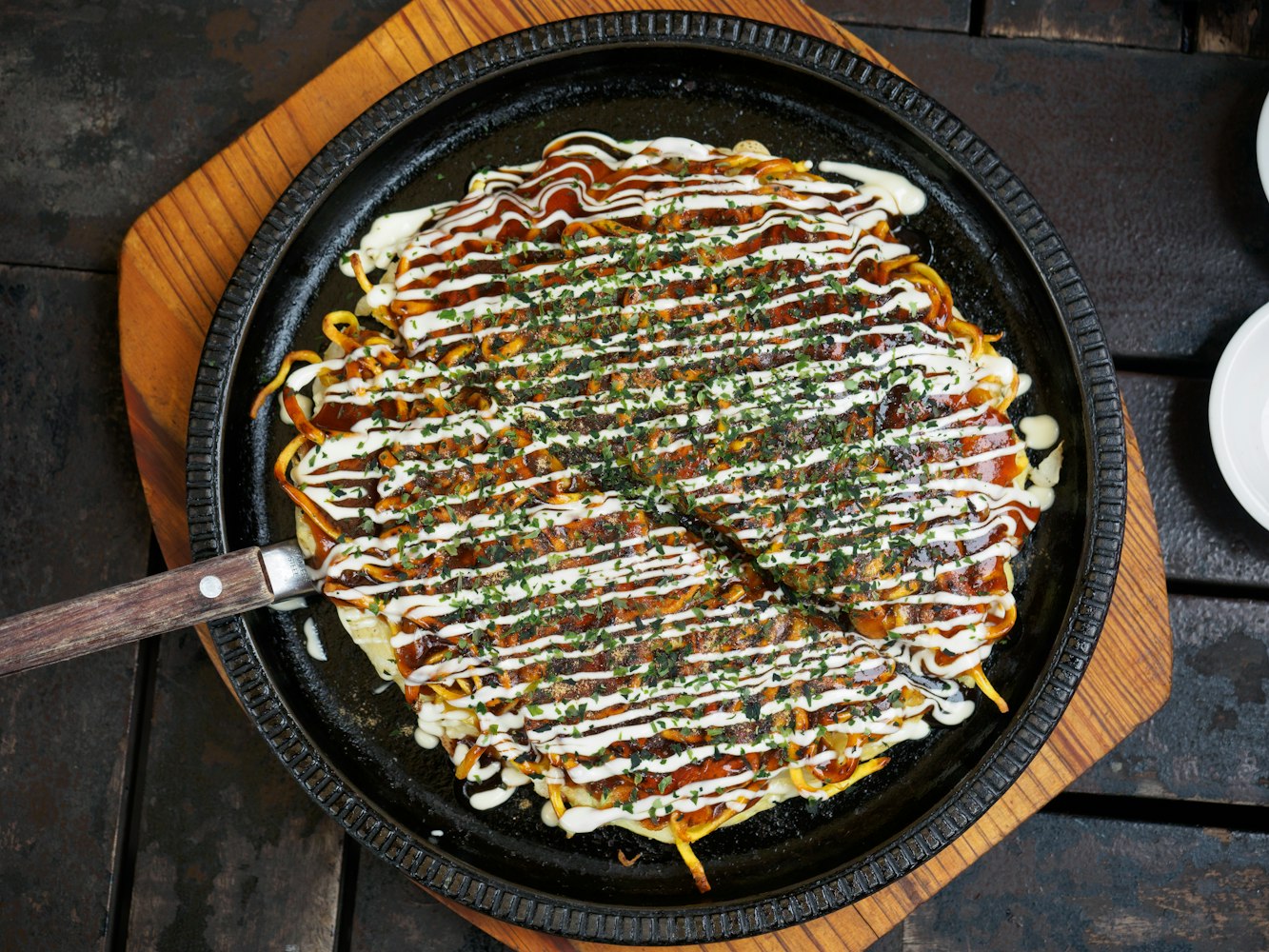
우드 에그 오코노미야키 뮤지엄은 히로시마에 있는 매력적인 장소로, savory Japanese pancake의 역사와 문화적 중요성을 파고듭니다. 이 박물관은 오타후쿠 소스 공장 바로 옆에 위치하며, 이 사랑받는 요리의 발전과 제2차 세계 대전 이후 히로시마에서의 역할을 소개하는 인터랙티브 전시를 제공합니다.
방문객들은 경험 많은 강사의 안내로 전통적인 핫플레이트와 테판 그릴을 사용하여 히로시마 스타일의 오코노미야키를 준비하는 실습 요리 수업에 참여할 수 있습니다. 이 경험은 교육적이면서도 재미있으며, 참가자들이 자신의 창작물을 맛보고 이 상징적인 지역 요리를 더 깊이 이해할 수 있게 합니다.
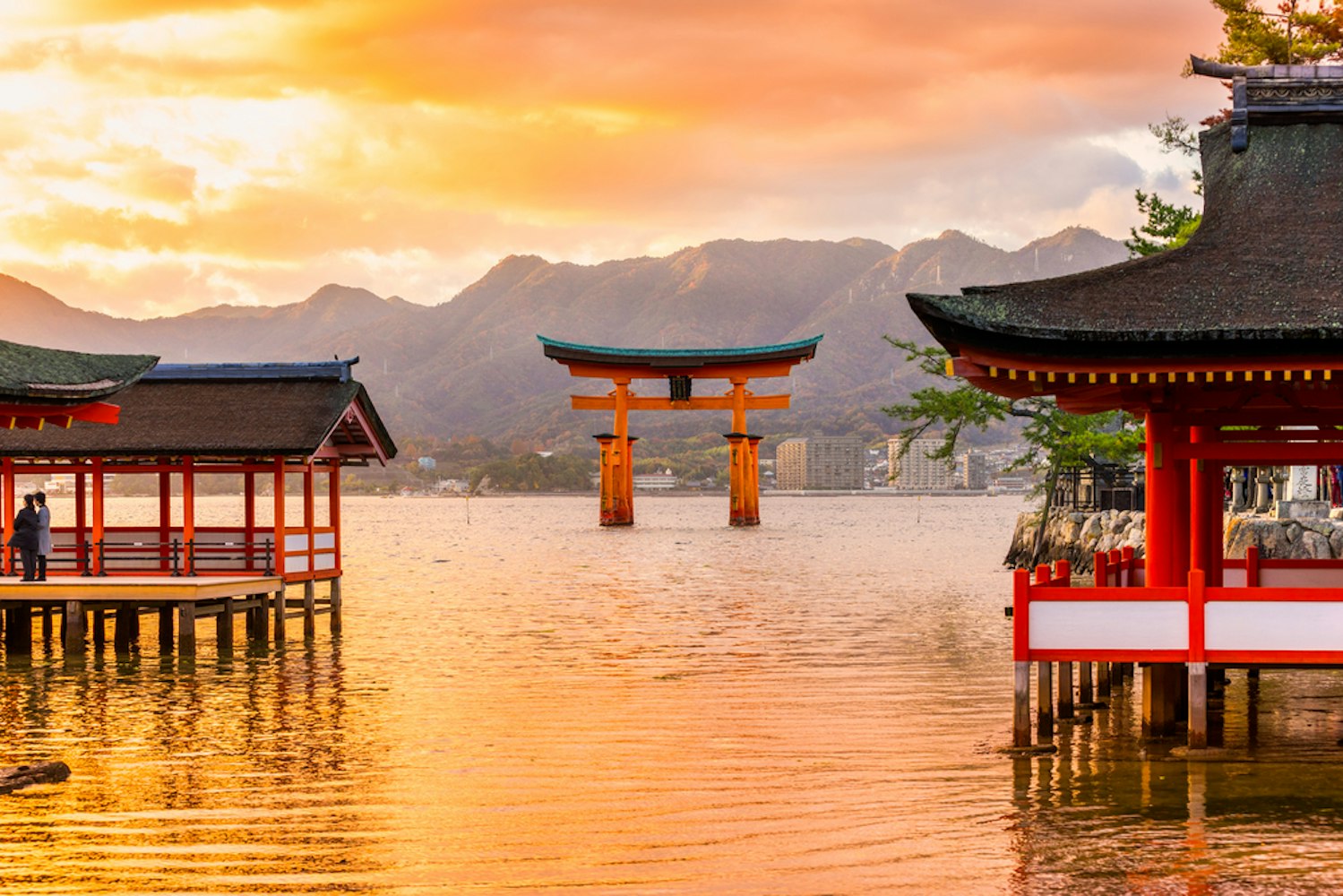
이츠쿠시마 신사, 미야지마 섬에 위치하며, 고조기조 마린드로 물속에 떠 있는 상징적인 토리이 게이트로 유명하다. 이 환상적인 모습은 주홍색 게이트가 세토 내해의 푸른 색깔과 섬의 무성한 녹음을 배경으로 통합되어 마법 같은 느낌을 만들어낸다.
방문객들은 수면 위에 지어진 여러 개의 연결된 건물을 포함하는 신사 복합체를 탐방할 수 있으며, 이는 떠 있는 효과를 더욱 증대시킨다. 잊지 못할 경험을 위해, 흐르는 조수를 맞이하는 시간을 선택하면 신사와 토리이 문이 떠 있는 듯한 모습을 전하며, 히로시마에서만 경험할 수 있는 그림 같은 풍경을 제공한다.
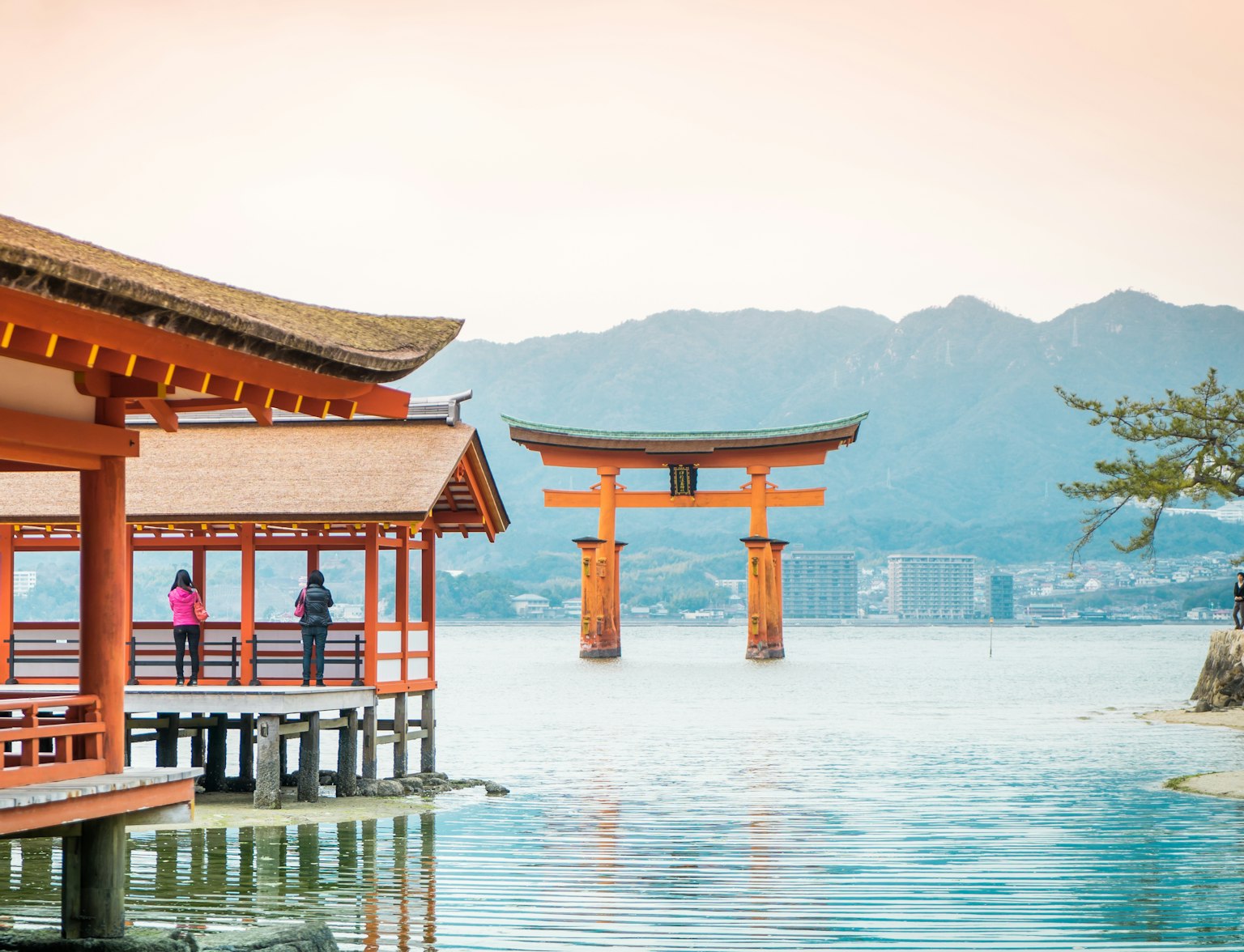
이 투어와 함께 경외감을 주는 이츠쿠시마 신사를 방문하세요.
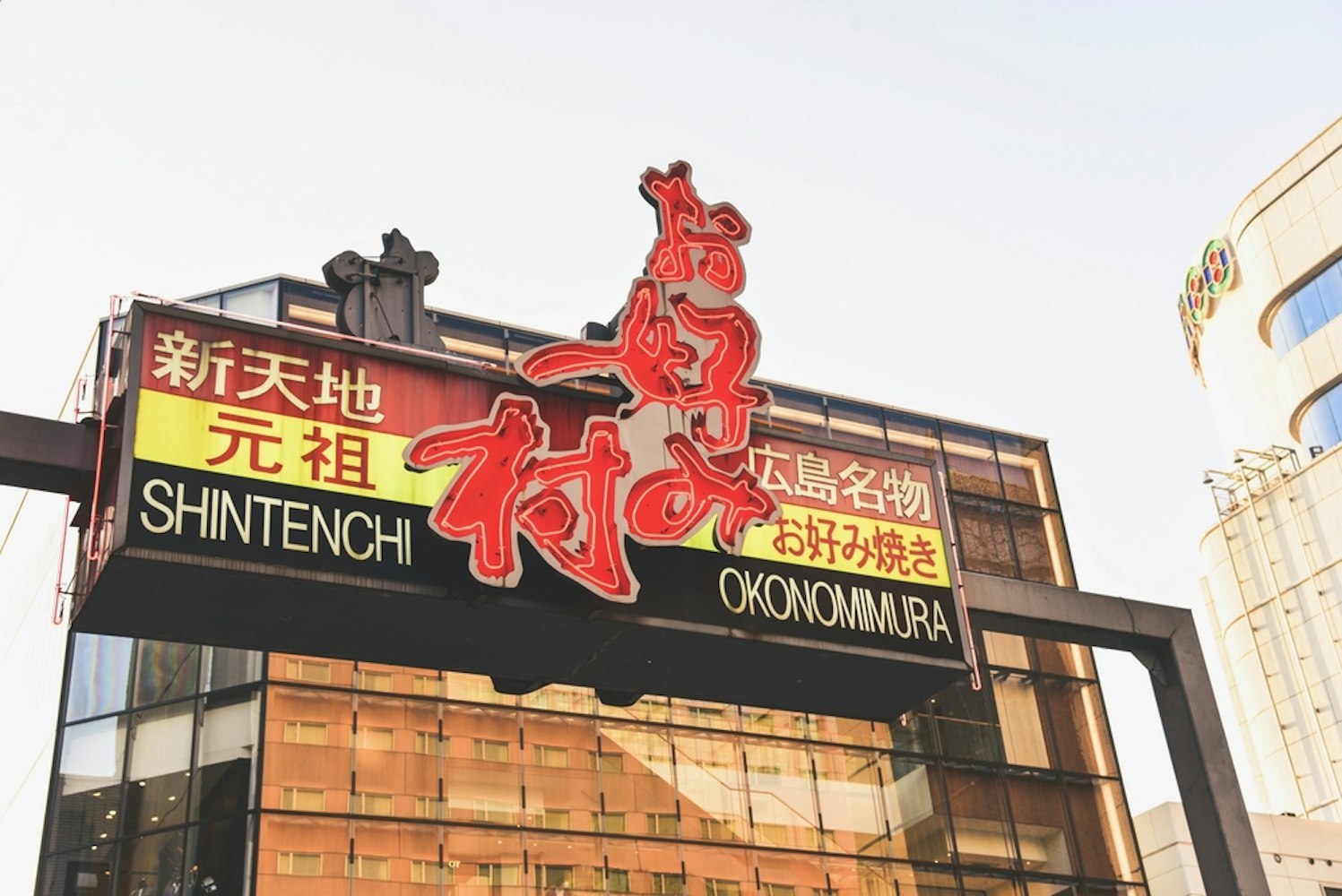
히로시마 시내에서의 즐거운 요리 여행을 시작하세요. 지식이 풍부한 지역 가이드가 히로시마의 음식 문화의 정수를 소개합니다. 투어는 보통 훌륭한 풍경을 자랑하는 슝케이엔 정원에서 시작되고, 이곳은 어드벤처의 고요한 정서를 통해 이끌어 줍니다.
참여자들은 오코노미무라, 즉 오코노미야키 마을을 방문하며, 히로시마의 유명한 오코노미야키를 맛볼 수 있습니다. 이 요리는 국수, 양배추, 다양한 토핑 등을 포함한 savory pancake입니다. 또한, 투어는 나가레카와와 같은 활기찬 지역을 포함하여, 단풍 모양의 케이크인 모미지 만주를 시식할 수 있는 기회를 포함합니다.
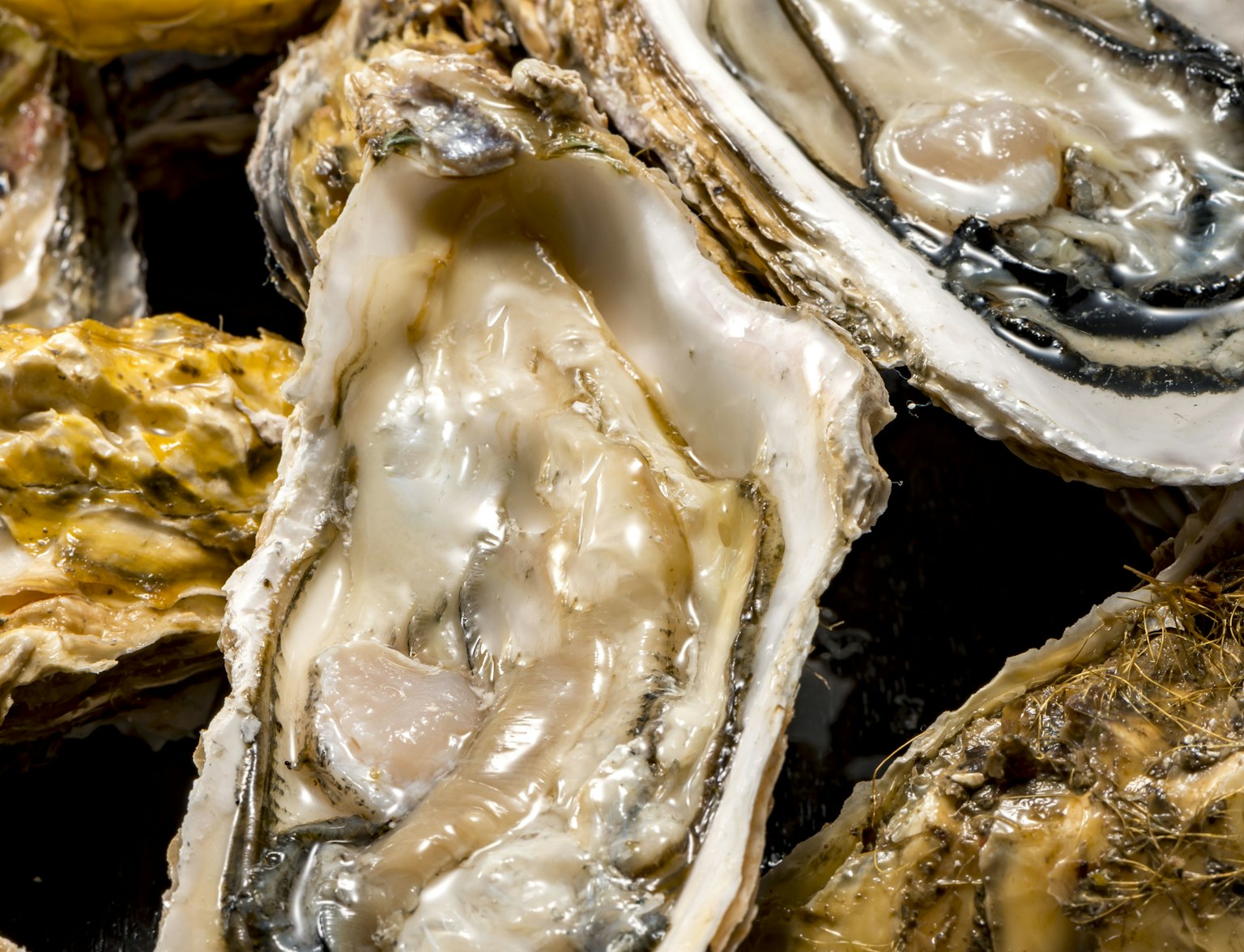
3시간 가이드 투어를 통해 히로시마의 미식 향연을 발견하세요.
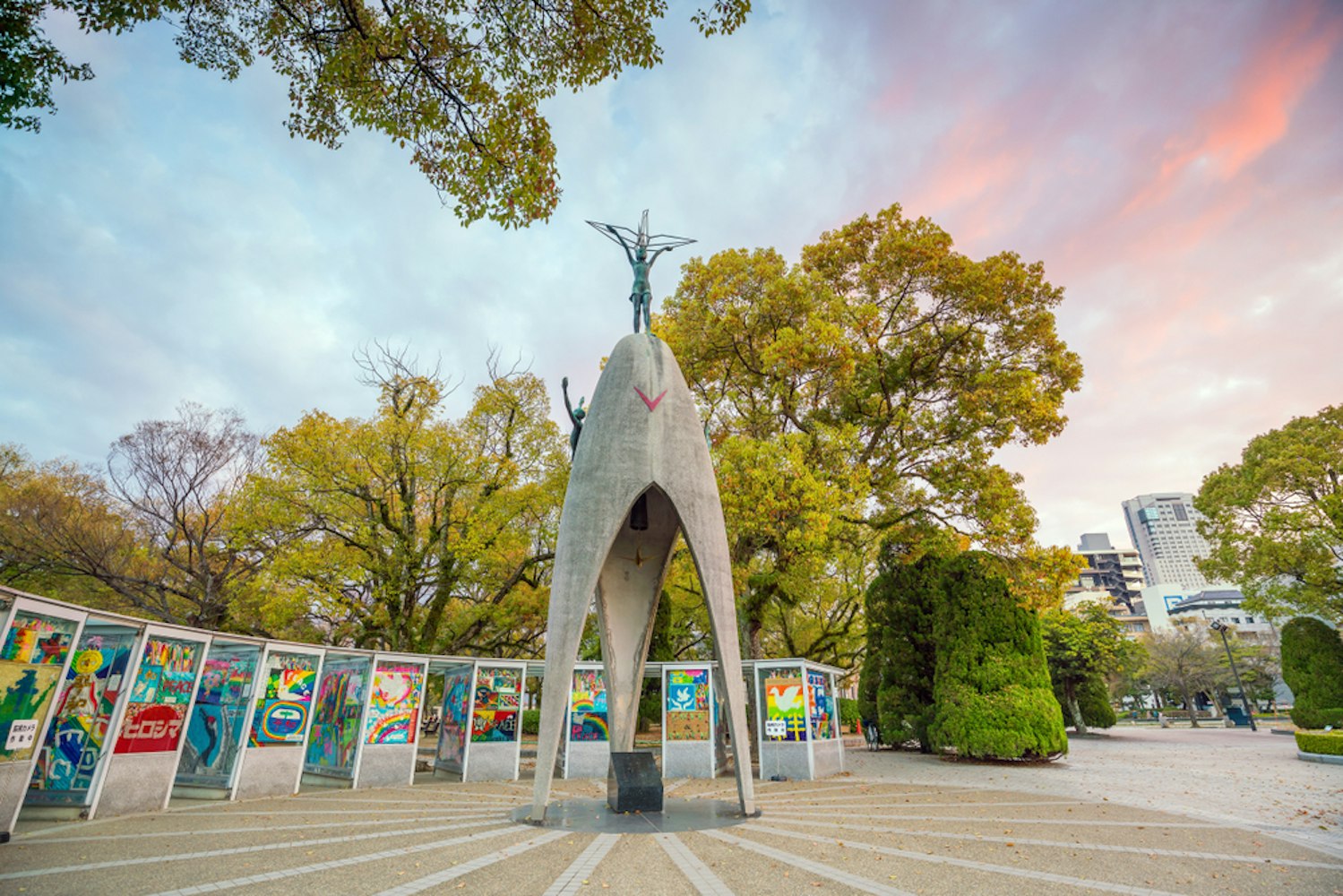
어린이 평화 기념비, 히로시마 평화 기념 공원 내에 위치하며, 히로시마의 원자폭탄으로 인해 희생된 어린이들을 위한 비극적인 추모물이다. 이 기념비는 방사선 노출로 백혈병에 걸린 소녀 사다코 사사키의 이야기에 영감을 받아 만들어졌다. 사다코는 회복을 바라는 마음으로 천 개의 종이 학을 접었다.
1958년에 세워진 이 9미터 높이의 기념비는 금빛 학을 들고 있는 사다코의 청동상으로 구성되어 있으며, 평화와 희망의 상징이다. 기념비 주변에는 전 세계에서 보내진 수천 개의 종이학이 담긴 유리 상자가 있으며, 이는 평화를 위한 전 세계의 소망과 핵전쟁 종식을 담고 있다.
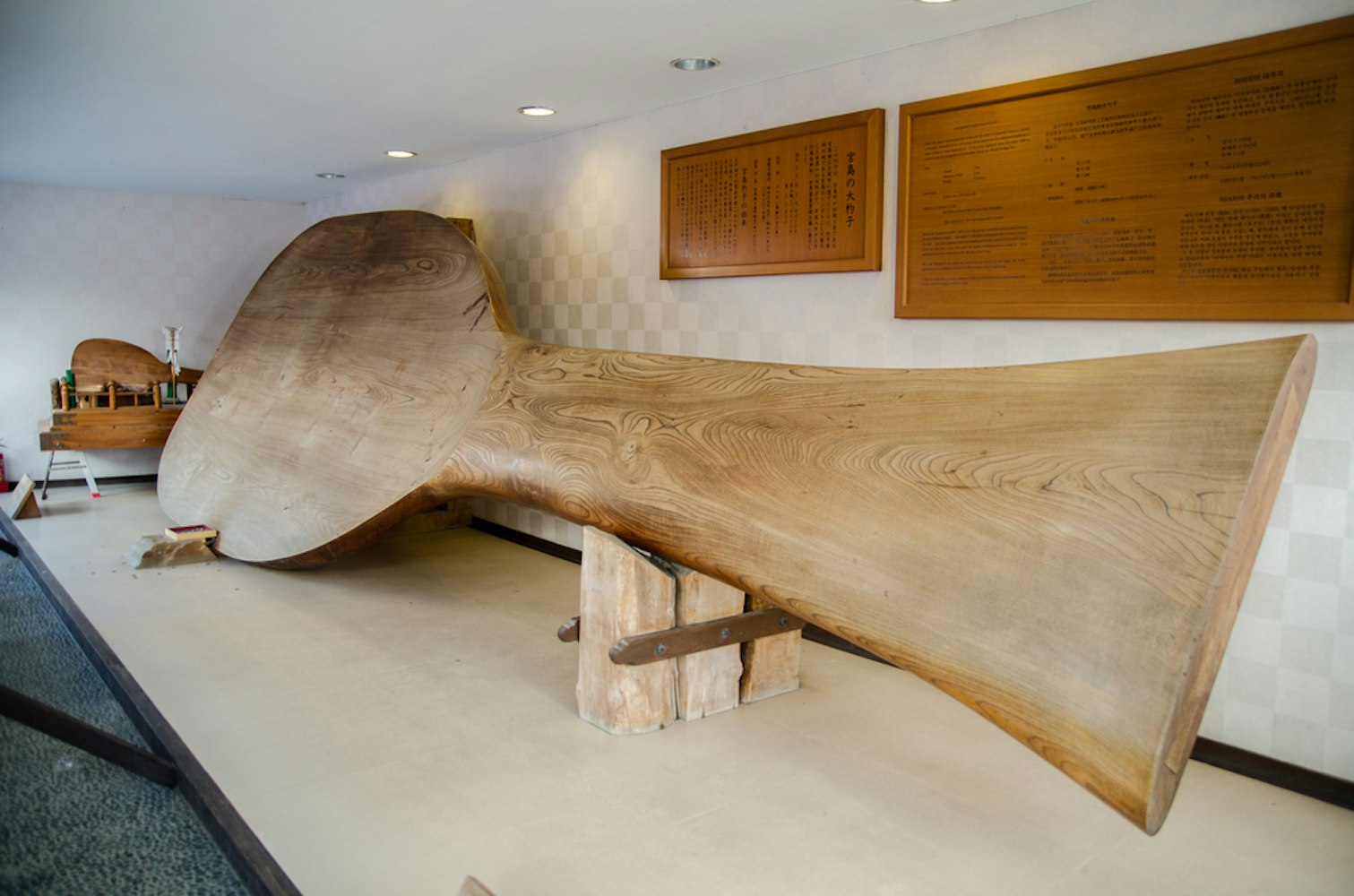
세계에서 가장 큰 나무 쌀 떠주는 것이 미야지마 섬의 생동감 넘치는 오모테산도 쇼핑 거리 한가운데에 서 있다. 이 전통적인 예술의 걸작은 길이 7.7미터, 너비 2.7미터, 그리고 무게 2.5톤으로, 미야지마를 쌀 떠주는 것의 고향으로 상징하기 위해 만들어졌다. 이를 통해 미래 세대를 위한 전통적인 목공예를 지키고자 하였다.
1996년에 완료된 이 조각은 이츠쿠시마 신사가 유네스코 세계문화유산으로 지정된 것을 기념하는 조각이다. 이 거대한 쌀 떠주는 것은 매혹적인 시각적 요소이자 섬의 풍부한 문화 유산을 상징한다.
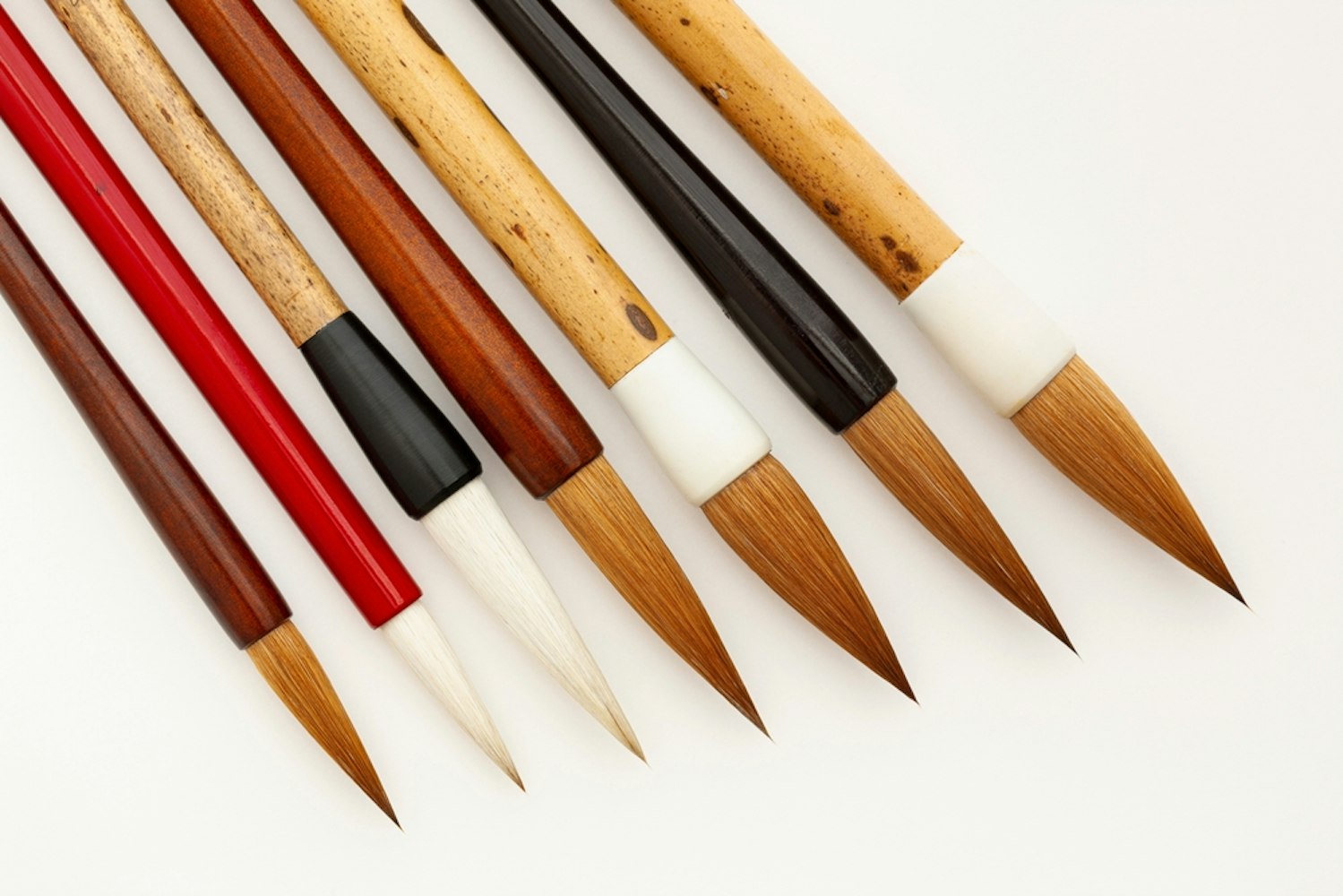
히로시마현의 작은 마을인 쿠마노를 방문하면 전통적인 브러시 제작 기술인 쿠마노 후데를 탐색할 수 있는 독특한 기회가 주어진다. 쿠마노는 일본의 서예와 화장 브러시의 약 80%를 생산하며, 각 브러시는 수세기 전의 기법을 사용하여 제작된다.
후데노 사토 고보 브러시 박물관에서 방문객들은 자연머리 선택에서부터 브러시 팁을 형성하는 복잡한 브러시 제작 과정을 목격할 수 있다. 또한, 그들은 자신의 브러시를 만들기 위한 워크숍에 참가해보는 짜릿한 문화를 체험할 수 있다.
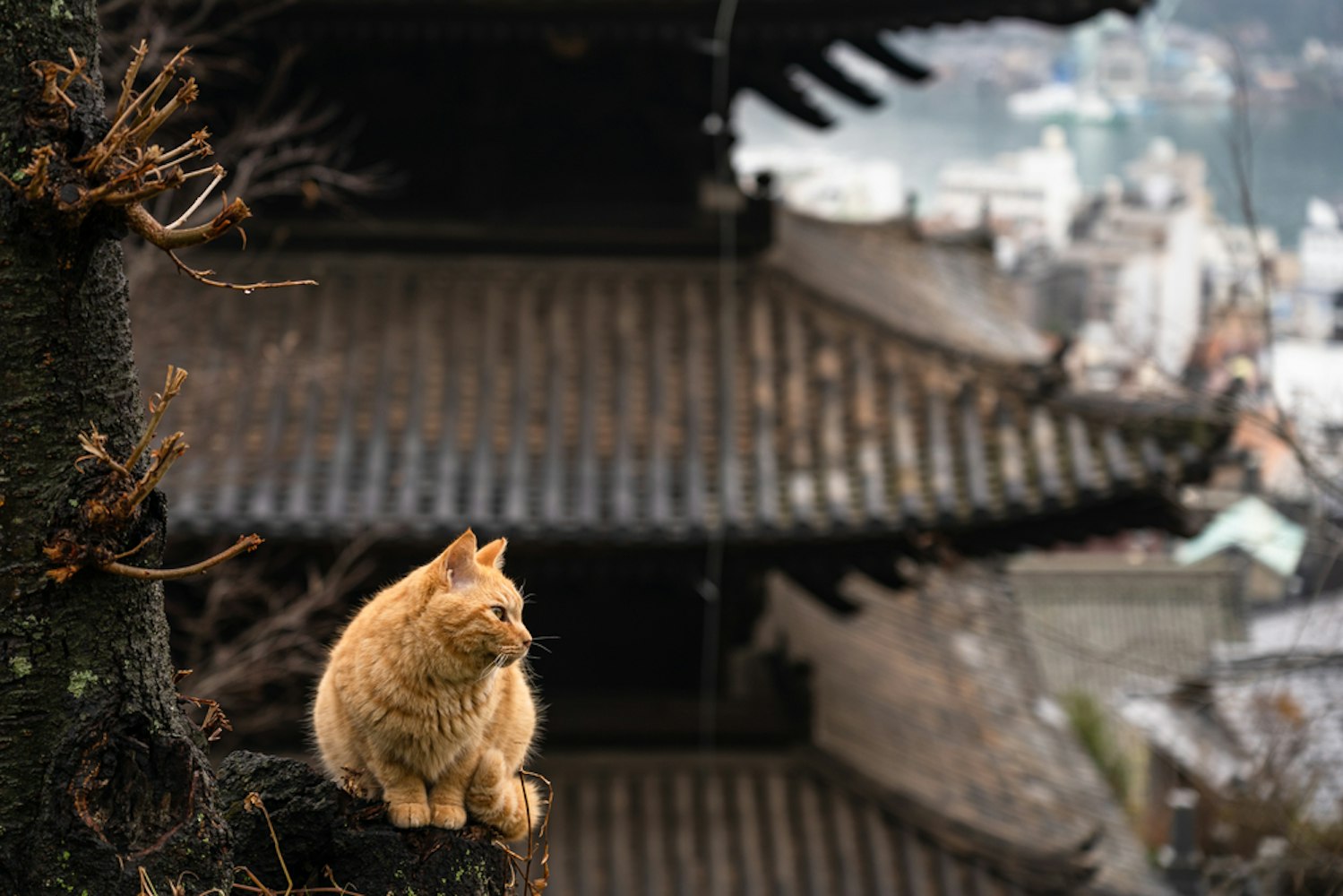
고양이 골목, 또는 네코노 호소미치, 오노미치에서 고양이 애호가 및 예술 애호가 모두에게 매력적이고 기발한 목적지이다. 이 200미터의 경로는 예술 갤러리, 아기자기한 카페, 그리고 사케 바가 가득한 아름다운 지역을 지나간다.
이 골목은 유명한 "축복의 고양이"로 장식되어 있으며, 이는 예술가 손지 소노야마의 손으로 그려진 손으로 그린 돌 고양이들이다. 이러한 행운의 돌 고양이는 골목 곳곳에 숨겨져 있어 탐험에 즐거움을 더해준다.
또한 방문객들은 지역의 독특한 상점과 고요한 분위기를 즐길 수 있으며, 이 매혹적인 히로시마 지역을 탐험하며 기분을 만끽할 수 있다.
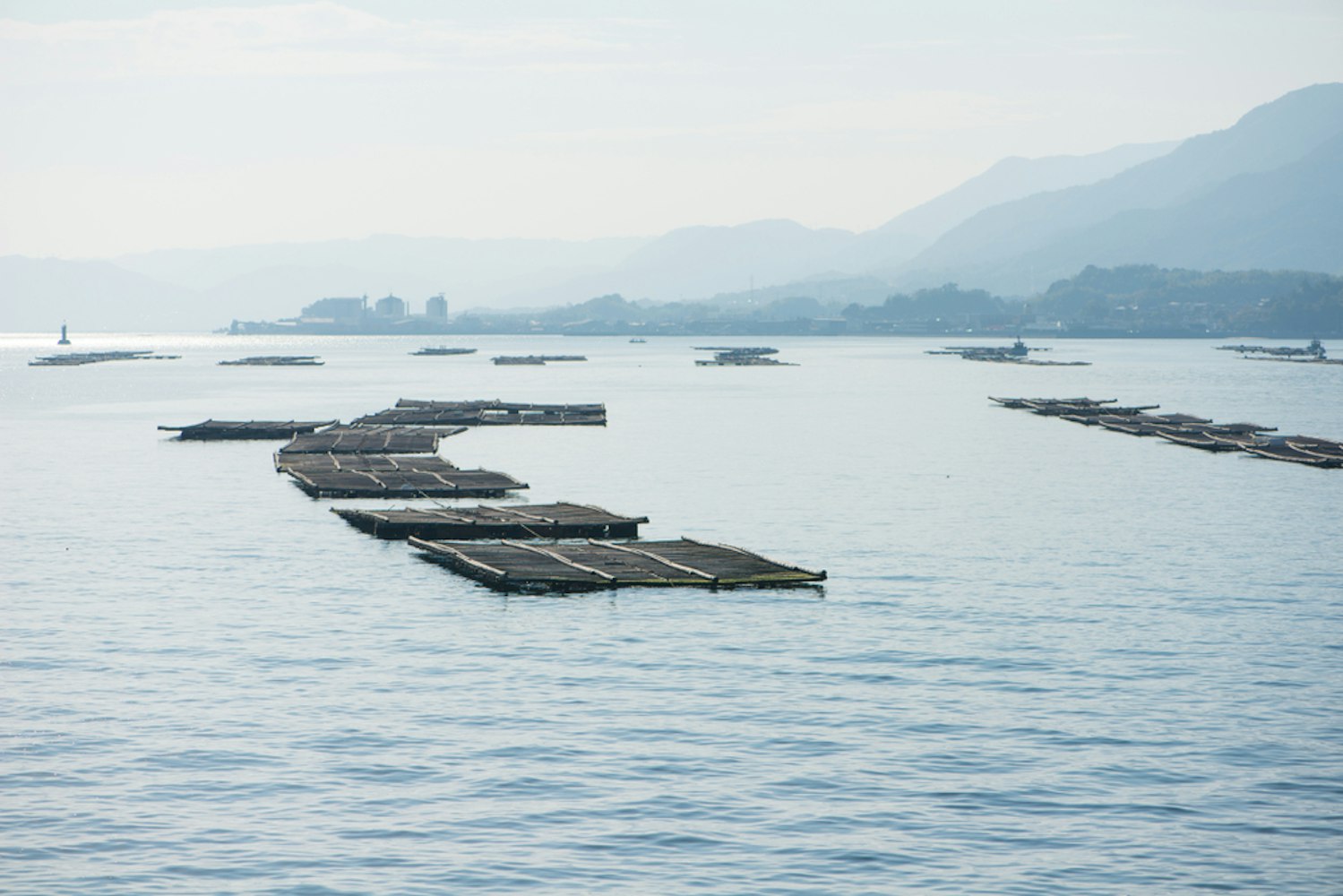
히로시마는 일본에서 가장 훌륭한 굴을 생산하는 곳으로 유명하며, 일본 전체 굴 생산량의 약 60%를 차지한다. 이 지역의 굴은 세토 내해의 영양이 풍부한 물에서 자생하며, 부드러운 파도와 따뜻한 기후가 이상적인 성장 조건을 만들어낸다.
방문객들은 전통적인 굴 양식 방법과 혁신적인 방파리 양식 기법을 탐험할 수 있으며, 이 기법은 기존의 대나무 막대 기법을 대체한다. 이 방법은 굴을 수면에 매달아두어 영양이 풍부한 환경에서 자생하게 하여, 자원의 남용을 방지한다.
히로시마를 방문하면 이 중요한 지역 산업에 대한 흥미로운 통찰력을 얻을 수 있으며, 신선하고 통통한 굴을 직접 맛볼 기회도 주어진다.
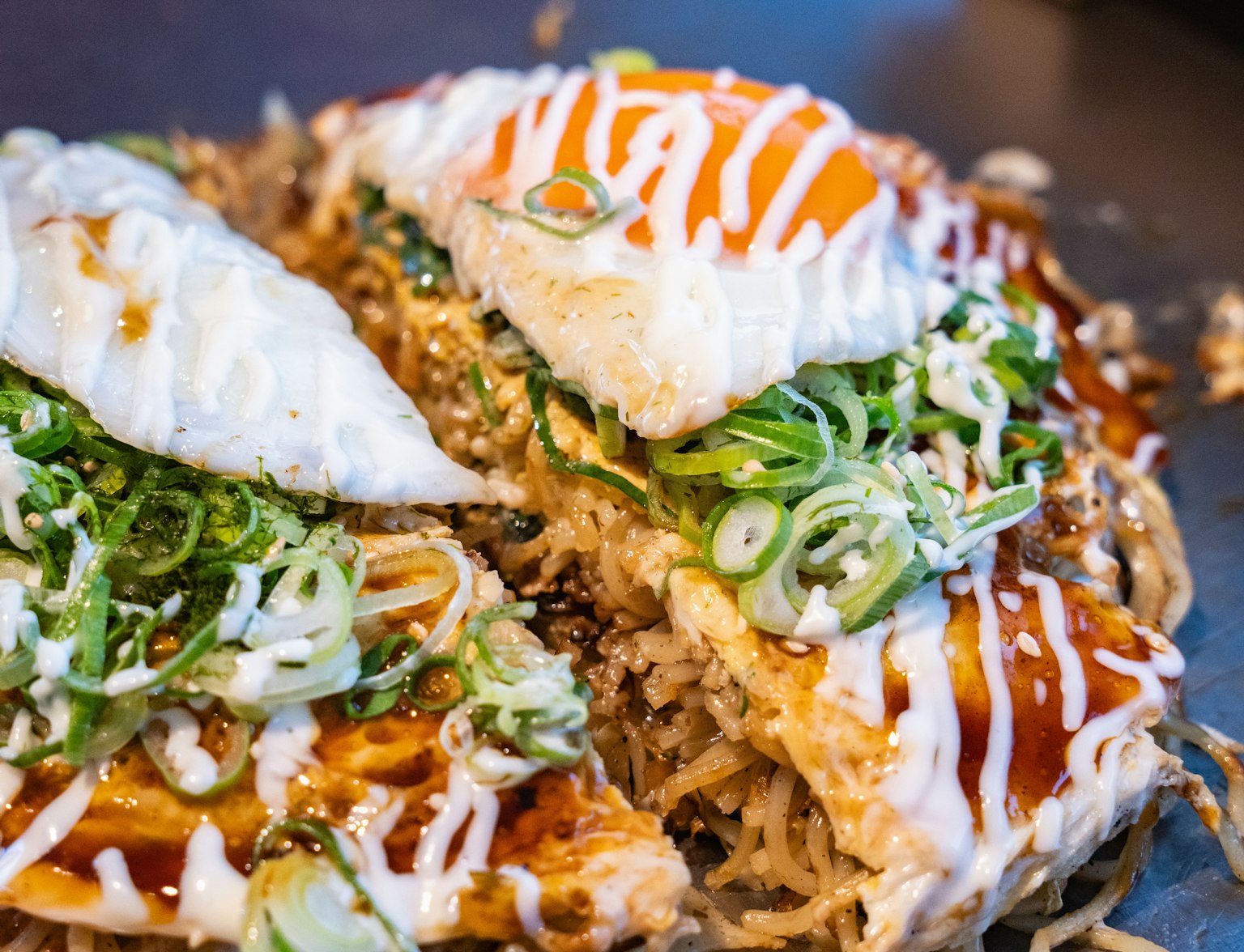
세 개의 인기 이자카야에서 오코노미야끼와 굴 같은 지역 특산물을 맛보세요.
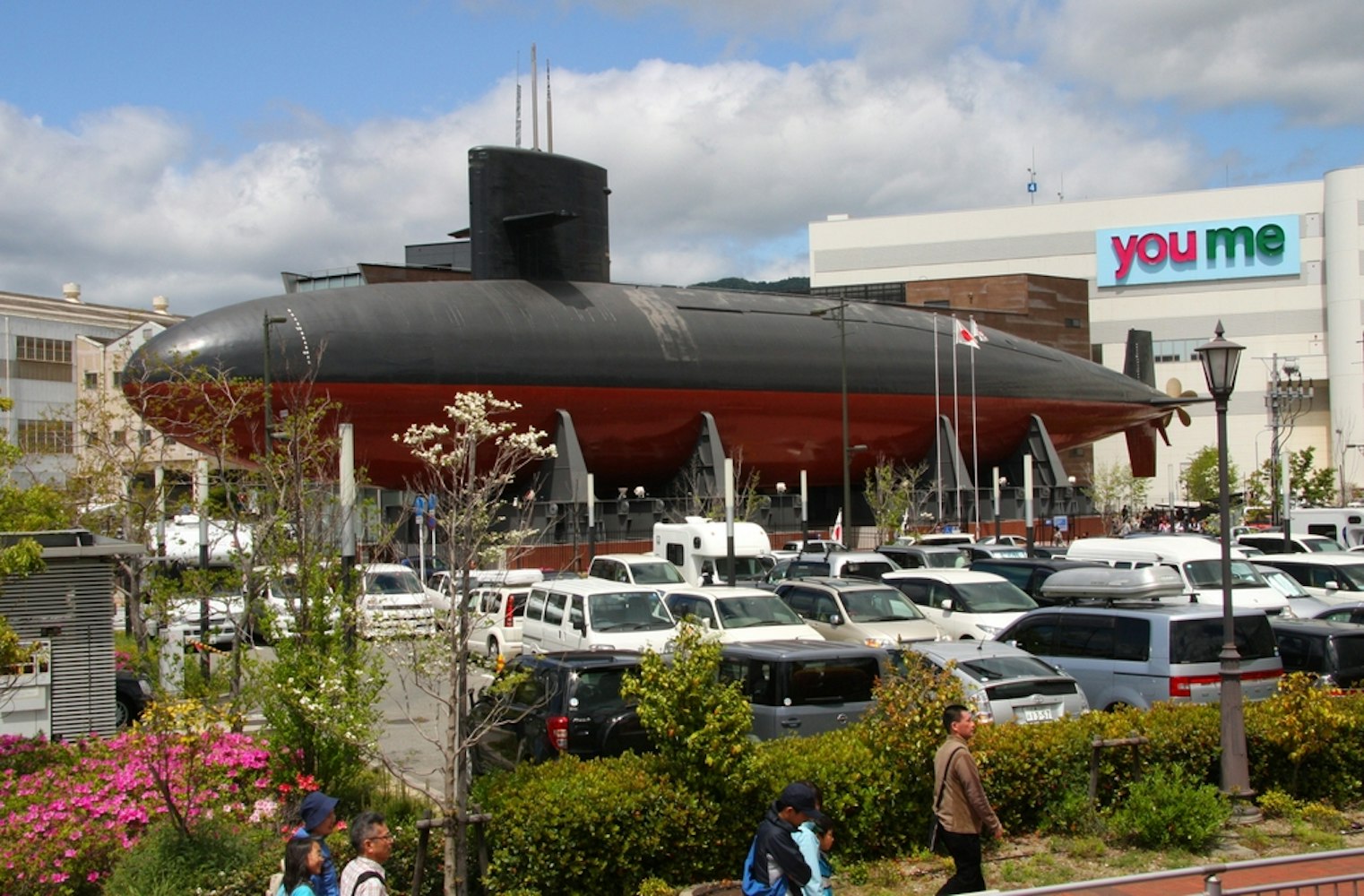
JMSDF 쿠레 박물관, 또는 "철갑 고래 박물관,"은 퇴역한 잠수함 아키시오를 소장하고 있으며, 해양 역사에 대해 독특한 관점을 제공하는 놀라운 전시물이다. 방문객들은 아키시오의 내부를 탐험하며 승무원이 사용하는 협소한 공간과 조정실을 직접 경험할 수 있다.
이 76미터 길이의 잠수함은 1985년부터 2004년까지 일본 자위대에서 복무했던 것으로, 일본의 해상 자위대의 수중 생활을 실감나게 보여준다. 쿠레시의 박물관은 히로시마에서 짧은 기차 여행으로 가는 길에 있으며, 해양 역사와 공학에 관심이 있는 모든 이에게 필수적인 장소이다.
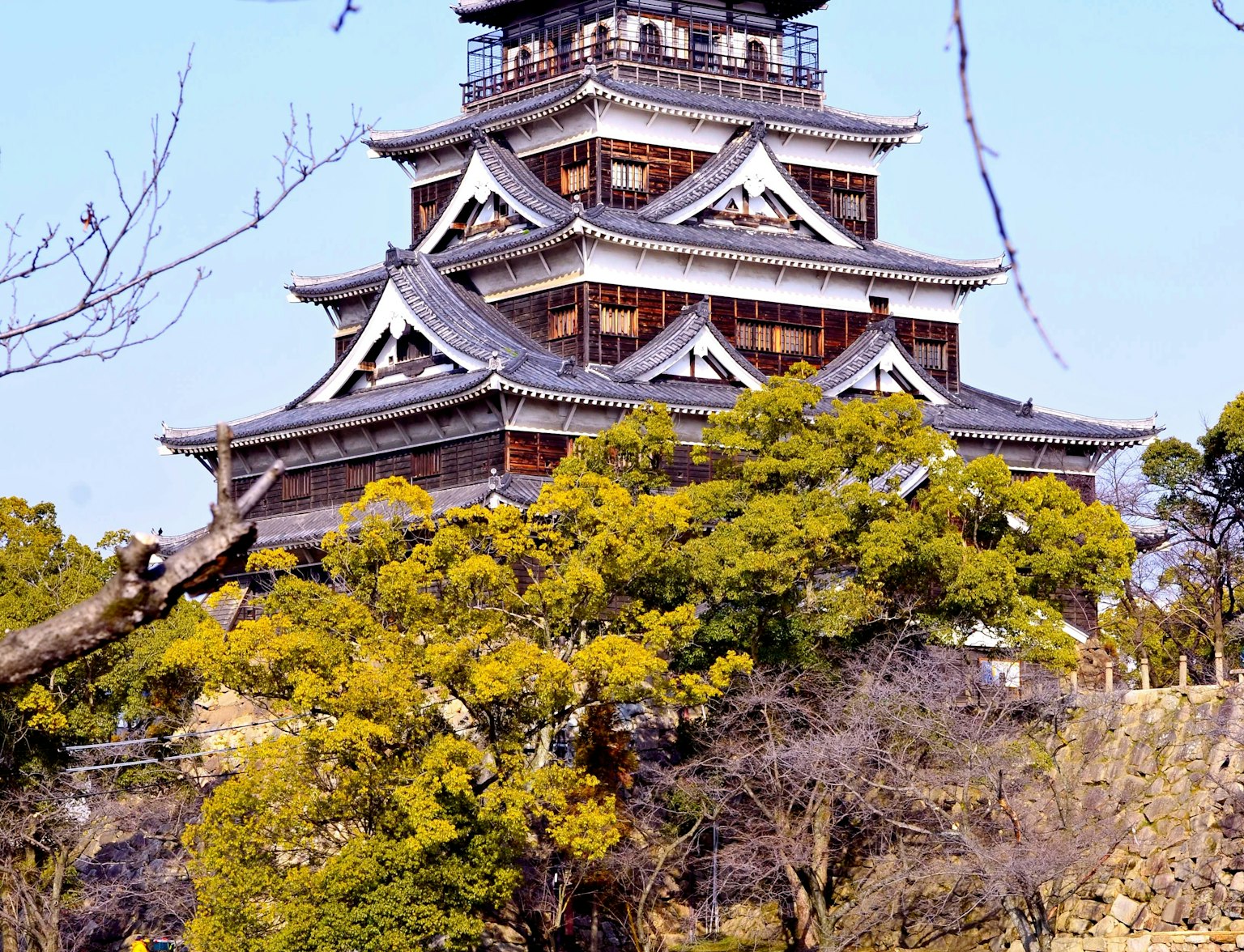
이 투어와 함께 아이언 웨일 박물관에서 군사 역사를 발견하세요.
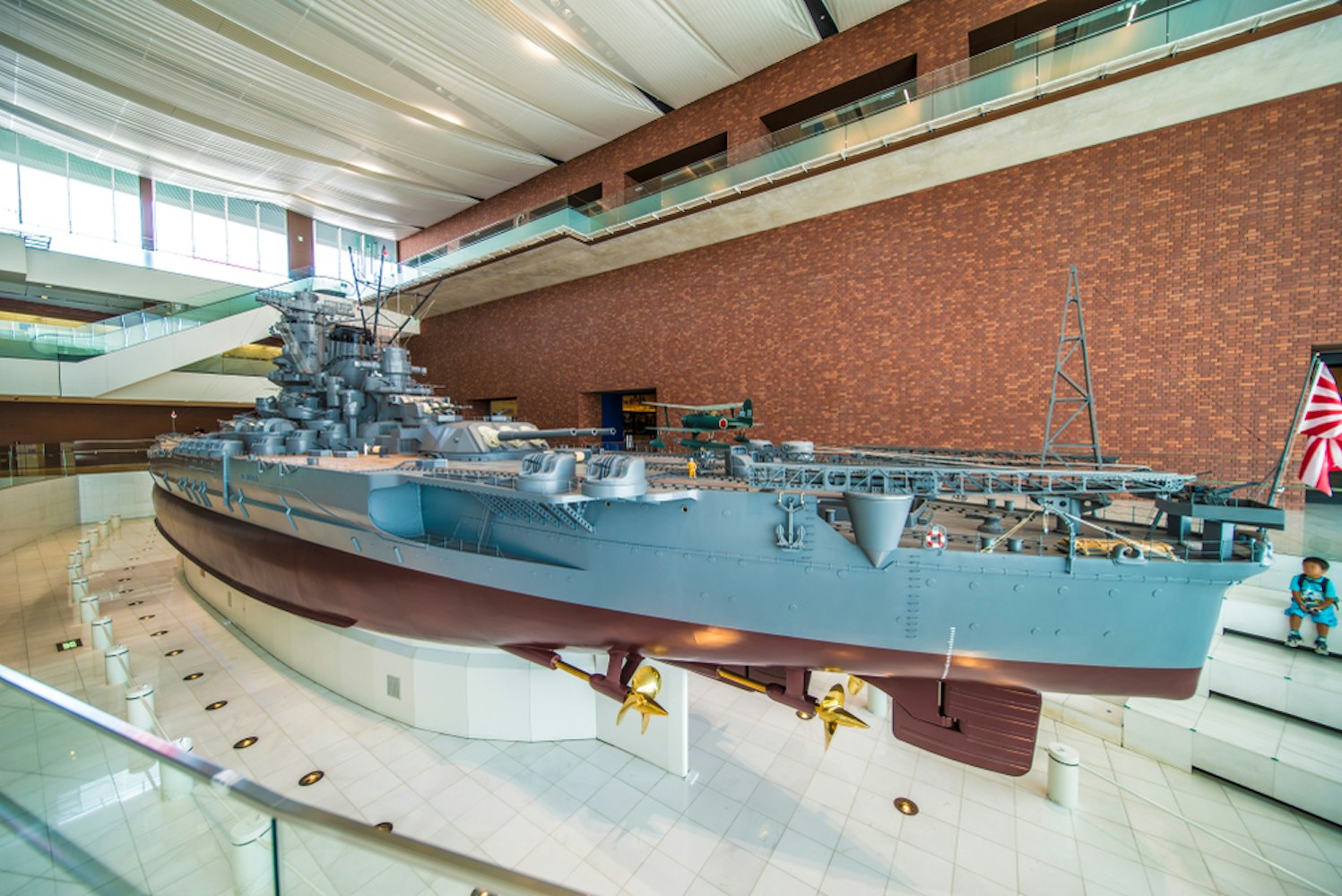
히로시마 쿠레 시에 있는 야마토 박물관은 세계에서 가장 큰 전함인 야마토에 전념한다. 이 전함은 제2차 세계 대전 중에 구축되었다. 방문객들은 이 거대한 선박의 1:10 축소 모델을 감상하며 그 인상적인 크기와 강력한 화력을 강조한다.
박물관은 야마토의 기술적 발전과 역사적 중요성에 대해 심층적으로 다루며, 장비, 문서 및 승무원들의 개인 이야기를 전시한다. 쿠레의 항구 지역에 위치한 박물관은 지역의 조선 역사에 대한 통찰과 해양 공학 및 과학 전시를 제공한다.
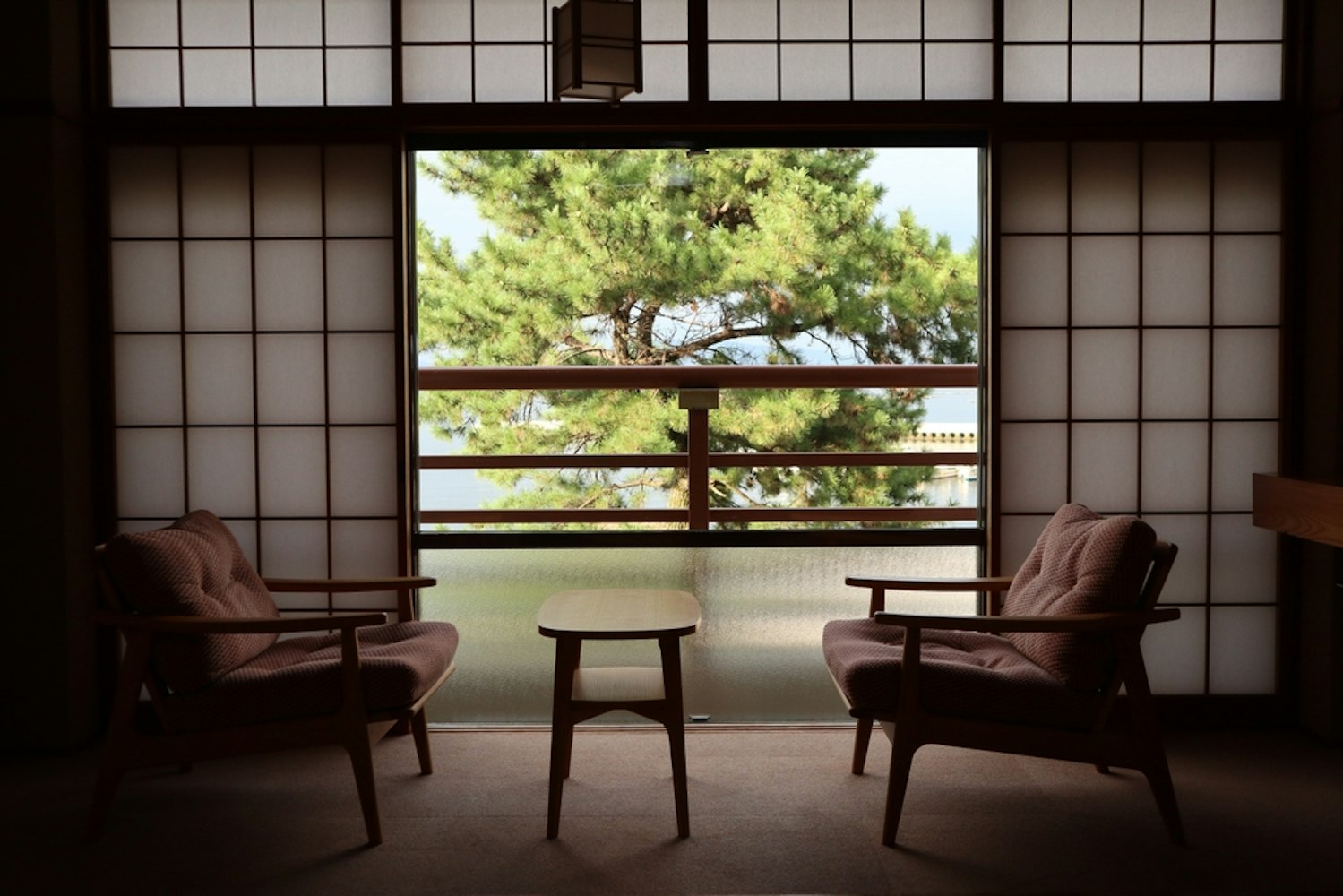
리후가 로얄 호텔 히로시마는 도시 중심부에 이상적으로 위치해, 히로시마 성 및 히로시마 평화 기념 공원과 같은 주요 명소에 쉽게 접근할 수 있다. 이 35층 호텔은 491개의 객실을 보유하고 있으며, 모두 무료 Wi-Fi, 공기 정화기, 그리고 궁극적인 편안함을 위한 서타 포켓 코일 매트리스와 같은 현대적 편의 시설이 갖추어져 있다.
손님들은 일본 요리에서 프랑스 요리에 이르기까지 다양한 요리를 제공하는 6개의 레스토랑을 통해 여러 가지 식사 옵션을 즐길 수 있으며, 도시의 파노라마 전망을 제공하는 옥상 바도 있다. 또한 호텔은 실내 수영장, 피트니스 센터, 스파, 회의실 등의 다양한 시설도 갖추고 있어 여가 및 비즈니스 여행객 모두에게 적합한 선택이 된다.
쉐라톤 그랜드 히로시마 호텔은 히로시마 역과 가까워 도시 및 그 너머를 탐험하기에 이상적인 거점이 된다. 이 고급스러운 호텔은 피트니스 센터, 실내 수영장 및 여러 개의 식사 옵션과 같은 현대적인 편의 시설을 갖추고 있어 편안한 숙박을 보장한다.
손님들은 현대적인 장식과 높은 천장이 있는 도시의 파노라마 전망을 제공하는 넓은 객실을 즐길 수 있다. 호텔의 중심 위치는 히로시마 평화 기념 박물관과 원폭 돔과 같은 주요 명소에 쉽게 접근할 수 있게 해준다.
호텔 그란비아 히로시마는 JR 히로시마 신칸센(불릿 트레인) 역과 직접 연결된 고급스러운 옵션으로, 일본 레일 패스를 사용할 여행자에게 적합하다. 이 미슐랭 3성급 호텔은 무료 Wi-Fi, 에어컨, 난방 시설을 갖춘 현대적인 객실과 함께 여섯 개의 레스토랑, 마사지 서비스 등을 제공한다.
손님들은 일본 및 중국 요리와 현지 식당에서 제공되는 뷔페 아침 식사와 같은 다양한 식사 옵션을 즐길 수 있다. 편리한 위치에 자리 잡은 이 호텔은 히로시마 성 및 마즈다 줌-줌 스타디움까지 차로 10분, 히로시마 평화 기념 공원까지는 전차로 20분 거리에 있다.
평화 대로와 히로시마 평화 기념 박물관 근처에 편리하게 위치해 있는 ANA 크라운 플라자 히로시마는 편안함과 우아함을 제공합니다. 손님들은 무료 Wi-Fi와 현장에서 네 개의 레스토랑으로 구성된 다양한 식사 옵션, 24시간 피트니스 센터를 즐길 수 있다.
호텔은 아로마 테라피와 편안한 숙박을 보장하기 위한 다양한 선택의 베개를 포함한 독특한 수면 우선 기능을 제공한다. 중심 위치는 히로시마의 주요 관광지를 탐험하기에 이상적인 거점이 된다.
쿠레 한큐 호텔은 쿠레시와 그 풍부한 해군 역사 탐방에 관심이 있는 방문객들에게 훌륭한 선택이다. JR 쿠레 역에서 단 1분 거리에 위치한 이 호텔은 야마토 박물관 및 JMSDF 쿠레 박물관과 같은 지역 명소에 쉽게 접근할 수 있다.
호텔은 우아하고 남유럽 스타일의 객실을 자랑하며, 현대적인 편의 시설과 주변 경관의 멋진 전망이 제공된다. 손님들은 섬의 풍부한 해산물 요리를 포함한 고급 다이닝도 즐길 수 있다.
히로시마의 효율적인 대중 교통 시스템 덕분에 도시를 탐색하는 것이 간편하다. 다음은 히로시마를 돌아다니는 데 도움이 되는 몇 가지 팁이다:
일본 철도 패스: 일본 전역을 광범위하게 여행할 계획인 사람들에게 이상적인 일본 철도 패스는 JR 기차에 대한 무제한 여행을 제공하며, 히로시마까지의 신칸센(불릿 트레인)도 포함된다.
히로시마 전기철도: 도시의 트램 시스템은 주요 명소인 평화 기념 공원과 히로시마 성 등을 탐험하는 편리하고 저렴한 방법이다.
자전거: 히로시마의 많은 지역, 특히 미야지마 섬은 자전거 친화적이어서 사이클링이 숨겨진 보석들을 발견하는 즐거운 방법이 된다.

히로시마에서 지역 전문가의 안내를 받으며 전기 자전거 모험을 시작하세요.
페리: 히로시마 시의 여러 항구에서 오쿠노시마 및 미야지마와 같은 세토 내해의 섬으로 가는 페리가 운항되고 있다.
지역 버스: 버스는 마즈다 박물관 및 미타키데라 절과 같은 시내 중심 외부의 관광명소에 접근하기 위한 실용적인 옵션이다.
히로시마는 그 슬픈 과거와 활기찬 문화, 자연의 아름다움이 잘 조화를 이루고 있는 도시이다. 히로시마 평화 기념 공원과 원폭 돔의 잘 알려진 길을 넘어, 독특한 경험들이 가득한 보물들이 기다리고 있다.
고요한 절과 울창한 정원, 인터랙티브 박물관과 요리의 즐거움에 이르기까지 히로시마는 여행자의 일정에 풍요롭게 할 수 있는 다양한 숨겨진 보석을 제공한다. 이러한 잘 닦인 길을 벗어난 명소를 탐험할 수 있는 기회를 받아들이고 히로시마의 지속적인 정신과 다양한 유산에 대해 더 깊이 감상해 보기를 권유한다.



